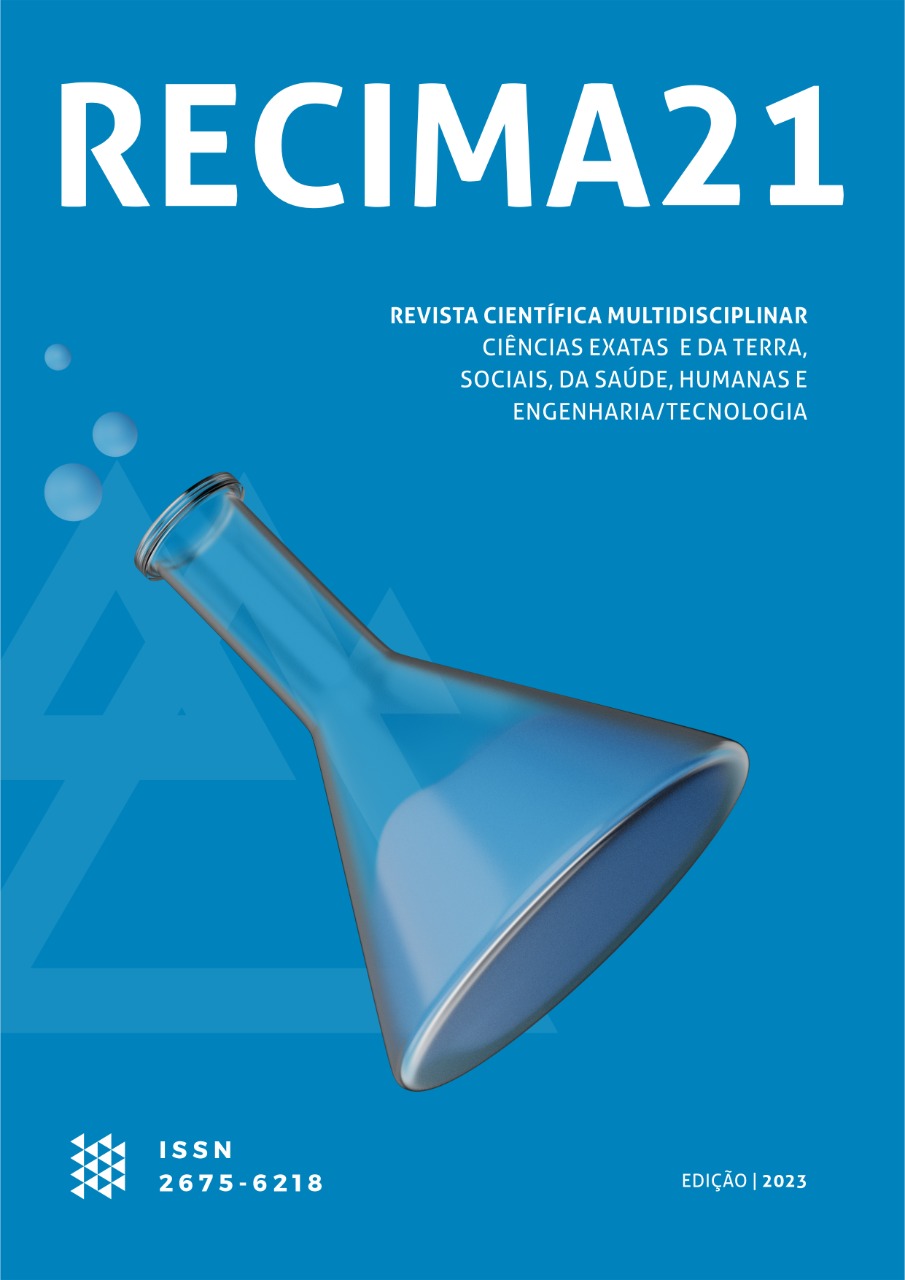SYNTHESIS OF DISODIUM 2-CARBOXI-INDOPHENOL DYE AND VERIFICATION OF ITS ANALYTICAL PROPERTY OF ACID-BASE INDICATOR
DOI:
https://doi.org/10.47820/recima21.v4i2.2797Keywords:
Organic synthesis, Indophenol blue, Dye, Acid-base indicatorAbstract
Dyes are substances, almost always organic, very present in our lives, and have the function of adding color without the contact material losing its transparency, being widely used in the industrial field. This article deals with the replication of disodium 2-carboxy-indophenol dye synthesis through condensation between drug structures, Paracetamol and Aspirin, which was conducted by technical® chemistry students from a state school in The Middle Of Piracicaba, MG. However, modifications to the synthesis process were proposed and new tests were performed to verify the property of acid-base indicator of the dye. The results revealed that the synthesized dye has analytical property of undergoing protonation or deprotonation depending on the reaction medium, changing color in acidic medium and returning to its original color in alkaline medium. However, it proved to be inefficient in dilute acid solutions. It was also observed that it destabilizes easily and, because it is synthesized in concentrated alkaline medium, it is estimated that its interaction with other solutions may interfere in the results of volumetric analyses, for example, and its use in titrations is not feasible. However, further studies are needed to better conclude on the feasibility of its use in quantitative analyses. The synthesis performed is important, considering that it can contribute to elucidate doubts regarding the application of the dye produced and provide opportunities for promising studies in organic synthesis and analytical chemistry based on pharmacological active principles.
Downloads
References
ARAÚJO, C. R. M.; et al. Acetilcolinesterase – AChE: uma enzima de interesse farmacológico. Revista Virtual de Química, v. 8, n. 6, p. 1818-1834, 2016.
BORGES, S. S.; KORN, M. Sistema multicomutado de análise em fluxo para determinação de amônio e monocloramina em águas residuais e produtos de desinfecção. Revista Química Nova, v. 32, n. 5, p. 1175-1179, 2009.
CNIB – Centro Internacional de Informações sobre Biotecnologia. Biblioteca Nacional de Medicina. PubChem Compound Summary CID 10379, Indofenol. 2022. Disponível em: https://pubchem.ncbi.nlm.nih.gov/compound/indophenol. Acesso em dez. 2022.
BRAGANÇA, R. B. Corante e indicador de paracetamol e aspirina: experimento de química orgânica. Disponível em: https://www.youtube.com/watch?v=3Zxpsq0opBw&t=1s. Acesso em set. 2022.
FELTRE, R. Química Geral. 6ª ed. São Paulo: Moderna, 2004.
JORNAL MOMENTO QUÍMICO. Uma breve história da bioquímica. 2021. Disponível em: https://jornalmomentoquimico.wordpress.com/2018/08/23/uma-breve-historia-da-bioquimica/. Acesso em nov. 2023.
MENDES, A. T.; PEDROZA, M. M. Determinação da concentração de nitrogênio amoniacal pelo método de Nessler. In.: Congresso Técnico Cientifico da Engenharia e da Agronomia-CONTECC, Palmas/TO, set. 2019.
PONTES, F. V. M; et al. Método indofenol para determinação de nitrogênio em amostras de solo. Mineralis, Ministério da Ciência, Tecnologia e Inovação. p. 1-10, 2004. Disponível em: http://mineralis.cetem.gov.br:8080/bitstream/cetem/788/1/14Artigo%20JIC%202004%20Fernanda%20Veronesi%20e%20Maria%20Ines%20.pdf. Acesso em jan. 2023.
RABELO, J. C. A. Corante azul feito com paracetamol e aspirina. Disponível em: https://www.youtube.com/watch?v=7lFQ0V2YahA&t=392s. Acesso em set. 2022.
REIS, C; et al. Determination of ammoniacal nitrogen in samples of food, soil, fertilizers and water based on the reaction with formaldehyde. The Journal of Engineering and Exact Sciences, v. 6, n. 5, p. 647-654, 2020.
SHEVCHENKO, I. Synthesis of indophenol blue from N,N-dimethyl-4-nitrosaniline. 2020. License CC BY-SA 4.0. Disponível em: https://wordpress.org/openverse/image/7447771d-c861-46e3-b101-45e95ef8ecb7. Acesso em dez. 2022.
SOUZA, M. V. N. Estudo da síntese orgânica baseado em substâncias bioativas. 1ª ed. Campinas: Átomo, 2010.
ZIARANI, G. M.; et al. Metal-free Synthetic Organic Dyes. 1ªed. Elsevier, 2018.
Downloads
Published
How to Cite
Issue
Section
Categories
License
Copyright (c) 2023 RECIMA21 - Revista Científica Multidisciplinar - ISSN 2675-6218

This work is licensed under a Creative Commons Attribution 4.0 International License.
Os direitos autorais dos artigos/resenhas/TCCs publicados pertecem à revista RECIMA21, e seguem o padrão Creative Commons (CC BY 4.0), permitindo a cópia ou reprodução, desde que cite a fonte e respeite os direitos dos autores e contenham menção aos mesmos nos créditos. Toda e qualquer obra publicada na revista, seu conteúdo é de responsabilidade dos autores, cabendo a RECIMA21 apenas ser o veículo de divulgação, seguindo os padrões nacionais e internacionais de publicação.













